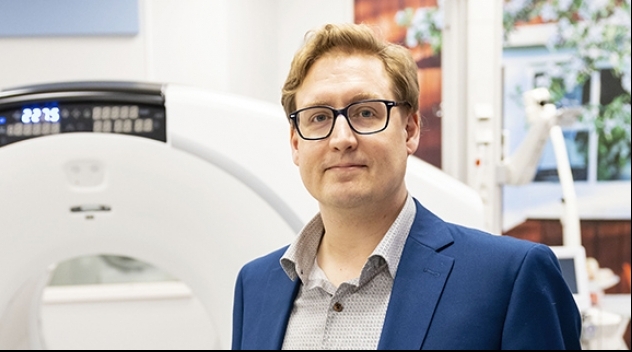New biomarkers can lead to breakthrough in diabetes research
With the discovery of two new biomarkers, Olof Eriksson, researcher in translational imaging, may lead the way to the scientific breakthrough that will enable curative drugs and personalised treatments for diabetes.
Diabetes is a global and fast-spreading disease that is rapidly consuming an increasing share of healthcare resources. The prevalence of type 1 diabetes - when the immune system breaks down the body’s insulin-producing beta cells - has doubled in the last 30 years, but despite intensive efforts, no cures are known. A scientific challenge has been to determine the actual effects of potential treatments, but now Olof Eriksson, researcher in translational imaging, has identified biomarkers that could enable a breakthrough for the field.
“To choose the best treatment available for type 1 diabetes, a doctor needs to know how the patient's insulin-producing beta cells develop over time, but performing the necessary biopsies is both complicated and hazardous. Our team has now developed a biomarker which, by adding small doses of radioactive tracers, quickly and without risk determines the number of active beta cells in the pancreas. Already this spring, we will begin clinical trials, and if things go as planned, we hope to lay the foundation for both new drugs and personalised treatments,” states Olof Eriksson, Associate Senior Lecturer at Uppsala University's Faculty of Pharmacy.
In parallel, diabetes researchers around the world are looking for answers to exactly what causes our immune system to attack insulin-producing beta cells in the pancreas. Here, too, Olof Eriksson hopes to break new ground via a contrast agent that with PET scanning can visualize how immune cells attack the beta cells. With a recently approved multi-million grant from the Swedish Research Council, the work is off to a flying start, and the project is already arousing interest far beyond the Eriksson Lab.
“For diabetes research, it would enable combined examinations, faster responses and a more efficient process towards a curative treatment. But the development of immunotherapies against tumor diseases also depends on biomarkers that bind to immune cells. Today, we cooperate with several research groups within oncology at Uppsala University, and have also initiated collaboration with several pharmaceutical companies while waiting for our biomarkers to be validated.”
Uppsala University's environment for PET-imaging early established itself among the world's foremost: Here, the first PET-biomarker for Alzheimer's disease was developed. Sweden's first PET/MR camera was installed here – and the development continues in close collaboration with SciLifeLab. Today, the environment facilitates research all the way from chemistry via pre-clinics to humans, and Olof Eriksson emphasizes its importance for his own group's many successes. Still, he identifies additional potential.
“This is a fantastic environment to work in with several groups that have both cutting-edge expertise and significant funding. What we lack is a common structure in which we can optimise our flow of knowledge, generate new ideas and with united efforts achieve success in the major calls. Currently, we have discussions and plan workshops in order to map the conditions for a potential PET center. If we succeed, I am convinced that it will add great value for all of us.”
Magnus Alsne
Facts
- Uppsala University’s Uppsala University’s Preclinical PET-MRI platform bridge the gap between basic research in medicinal chemistry and clinical application of molecular imaging.
- The platform work in close collaboration with collaboration with the Uppsala University Hospital PET centre.
- The platform is part of a pilot initiative to develop a national resource for PET-MRI within SciLifeLab.

